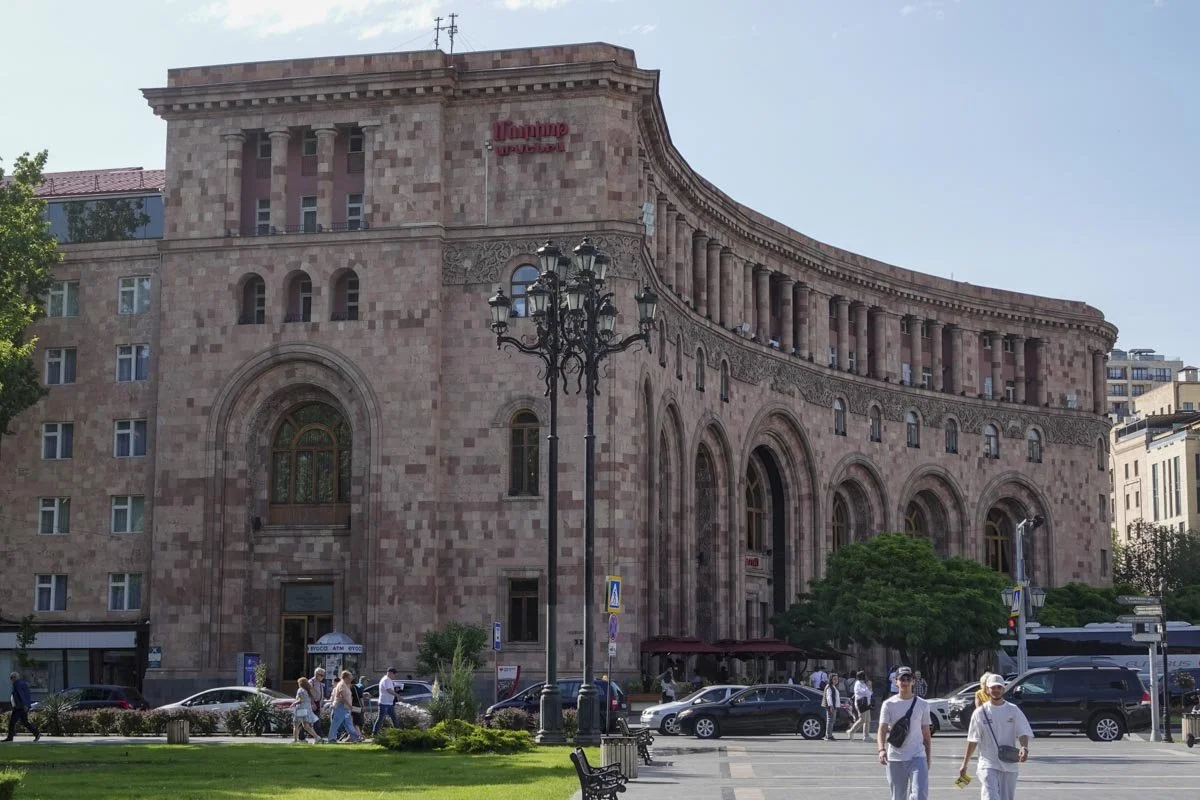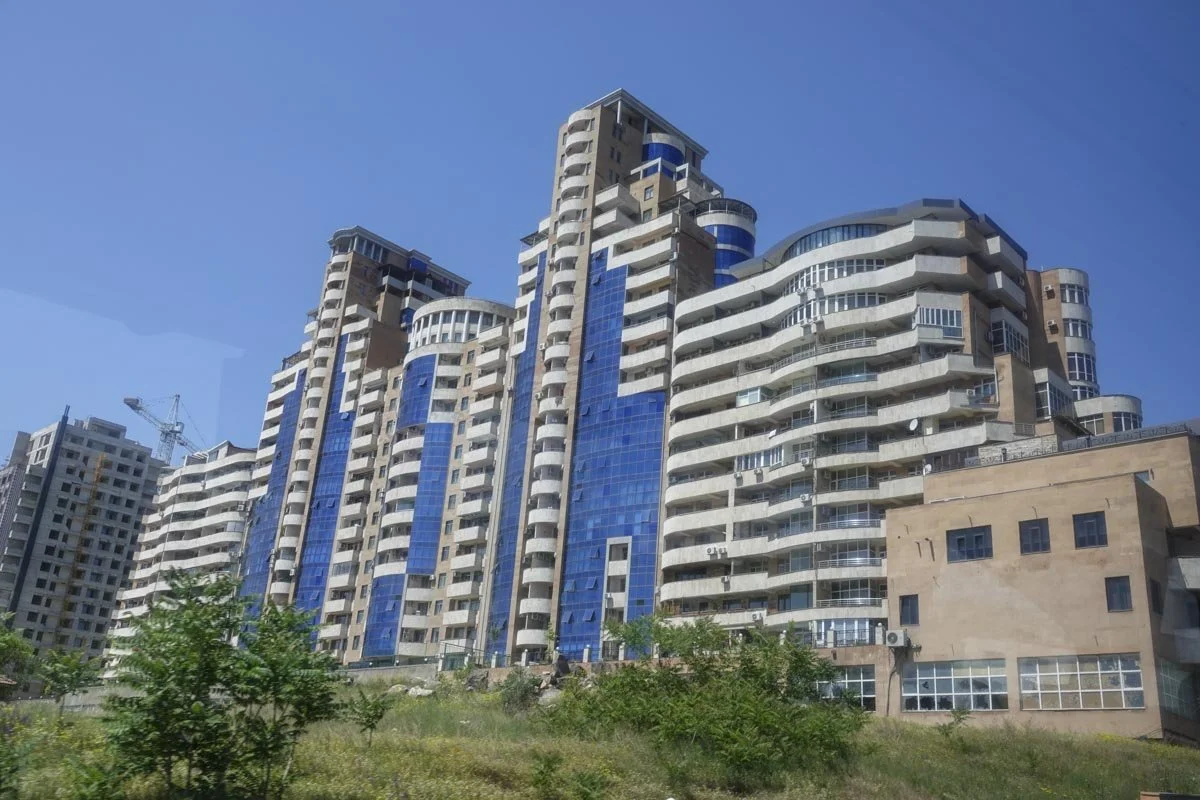Yerevan
We are now in Yerevan, the capital and largest city in Armenia. The founding of Yerevan, with a fortress, dates back to 782 BC which makes Yerevan older than Rome Italy. It was designed as an administrative and religious center which it still is today. The population of Yerevan is over a million people and is about 35 percent of Armenia's total population. I thought Yerevan was a beautiful city and we enjoyed our stay there.
I'll start my comments on Yerevan by giving a thumbs up to Alexander Tamanian, the primary architect of today's Yerevan. He is regarded as one of the great architects of the 20th century. He developed Yerevan's urban master plan as well as the Opera and Ballet Theater and the Government House. He left a long legacy of work in Armenia and Russia as he was a Russian-born Armenian.
I'll start with a statue of Tamanian at the Cascade complex which he designed. His statue is at the bottom of the complex. The next photo is from the top of the cascade complex which gives an overview of Yerevan. Tamanian's design for Yerevan called for no buildings to be over two stories so that everyone in Yerevan could see Mount Ararat from everywhere in town. Of course, developers and politicians haven't adhered to his design.
Republic Square is the central town square in Yerevan. It was originally designed by Alexander Tamanian in 1924. The square consists of an oval and a trapezoid-shaped section with a pool with musical fountains. The square is surrounded by five major buildings built in pink and yellow tuff (a type of volcanic ash rock). Buildings include the Government House, the History Museum and the National Gallery, and the Armenia Marriott Hotel, which is where we stayed in Yerevan for four days.
During Soviet times, it was called Lenin Square and featured a statue of Lenin at the square but that all changed with Armenia's independence.
Below are three photos of Republic Square, starting with the Marriott Hotel, our home in Yerevan. Next is the Government House and the History Museum.
Yerevan was evidently a much bleaker place during Soviet times. Since then, and especially since the early 2000s, Yerevan has undergone a major transformation. Now, retail outlets, shops, restaurants, and street cafes are common. I took the next photo while Vicky and I were out for a walk around the Republic Square area. It had a very European feel to it.
Our Armenian guide mentioned that some of the buildings in Armenia now seem to be designed to contrast dramatically with the Soviet era buildings. I don't know if the next one is one of those designs, but it seemed that way to me.







